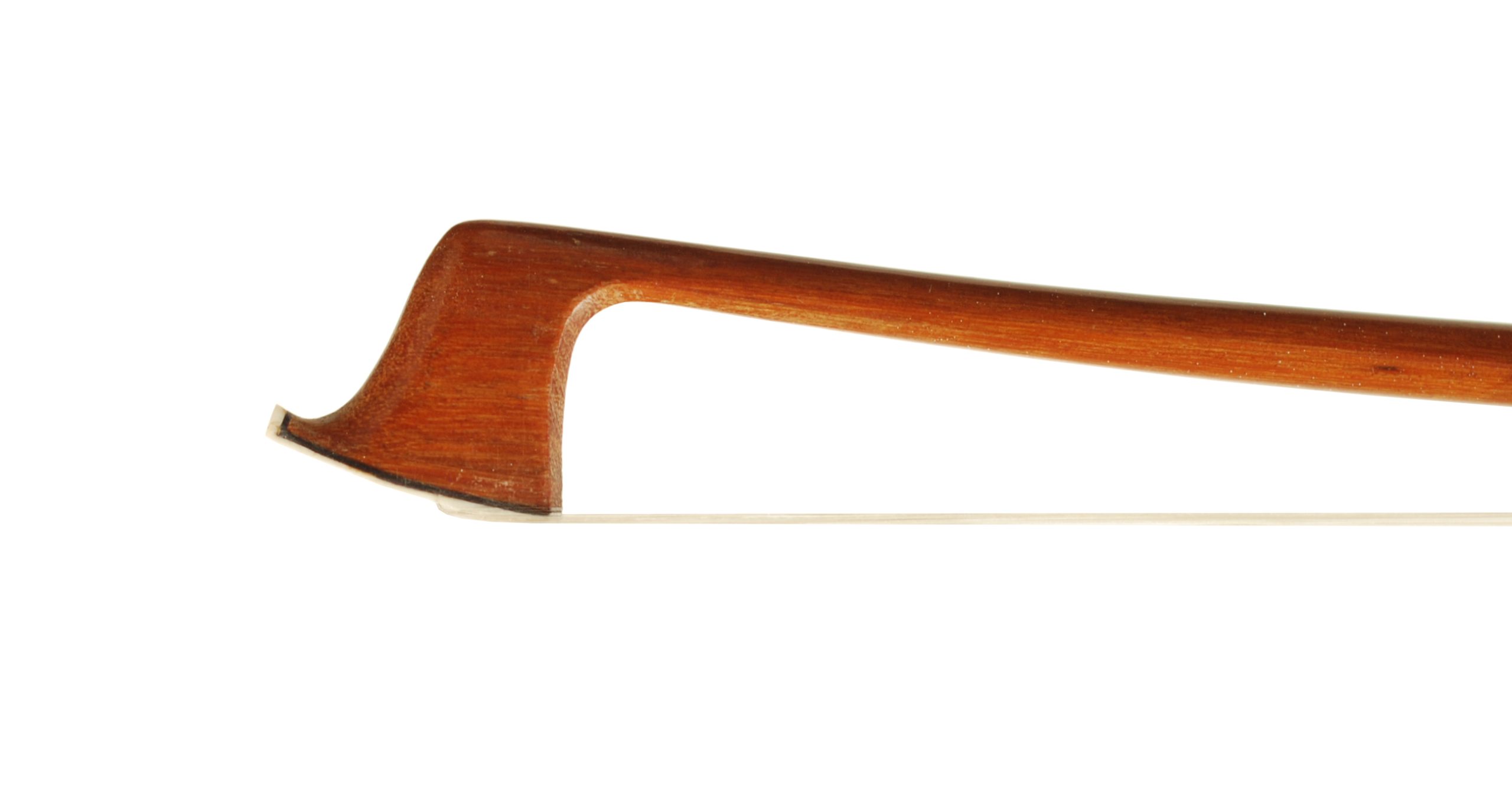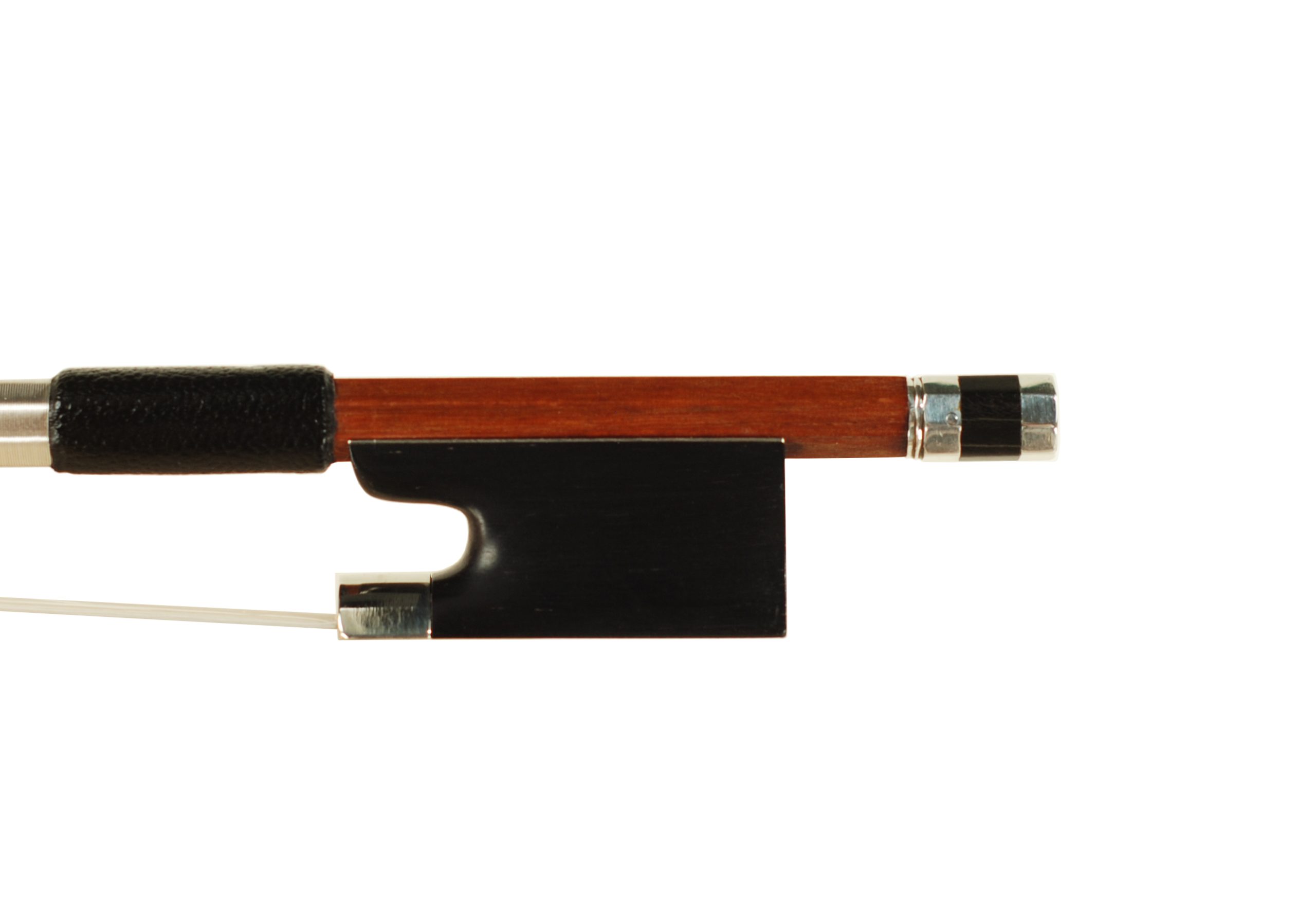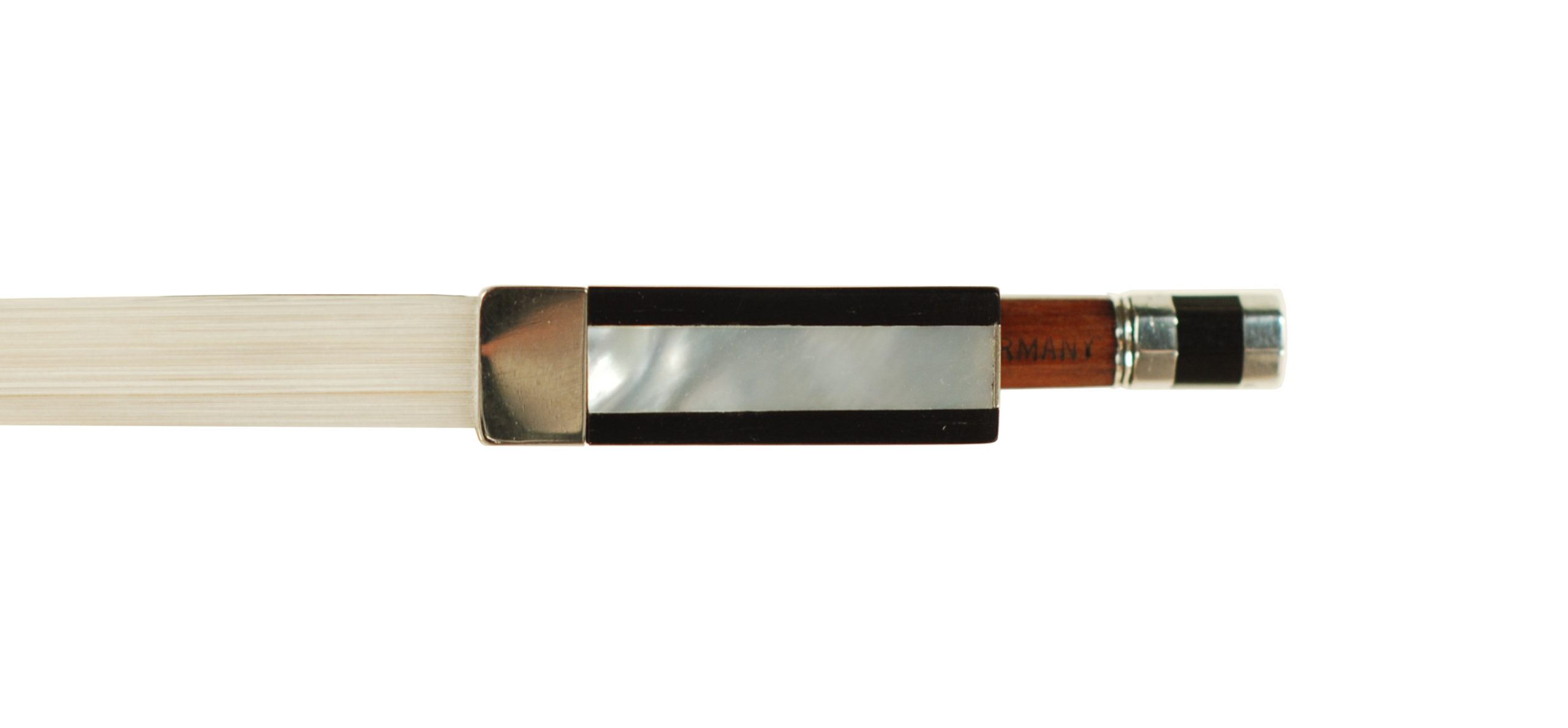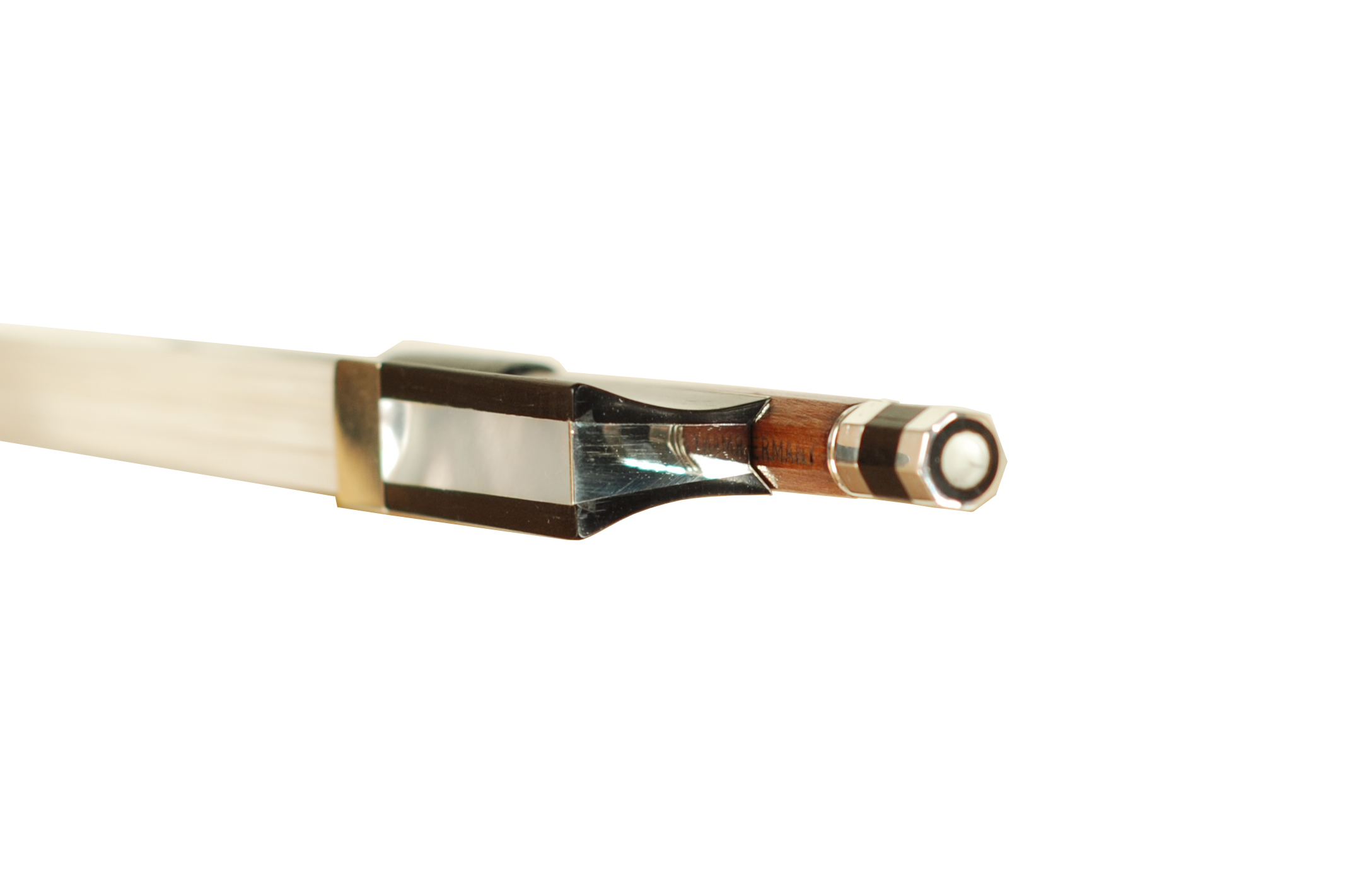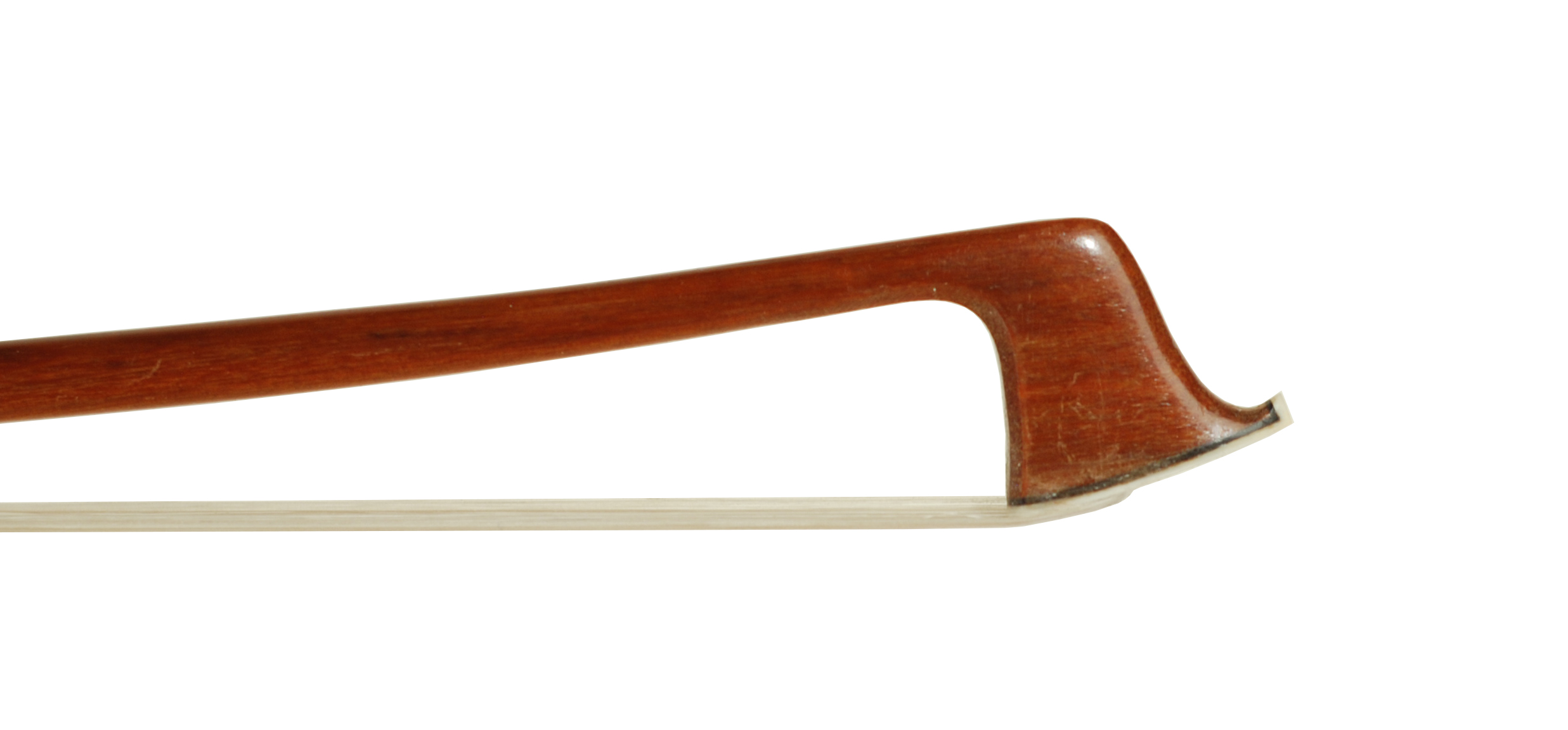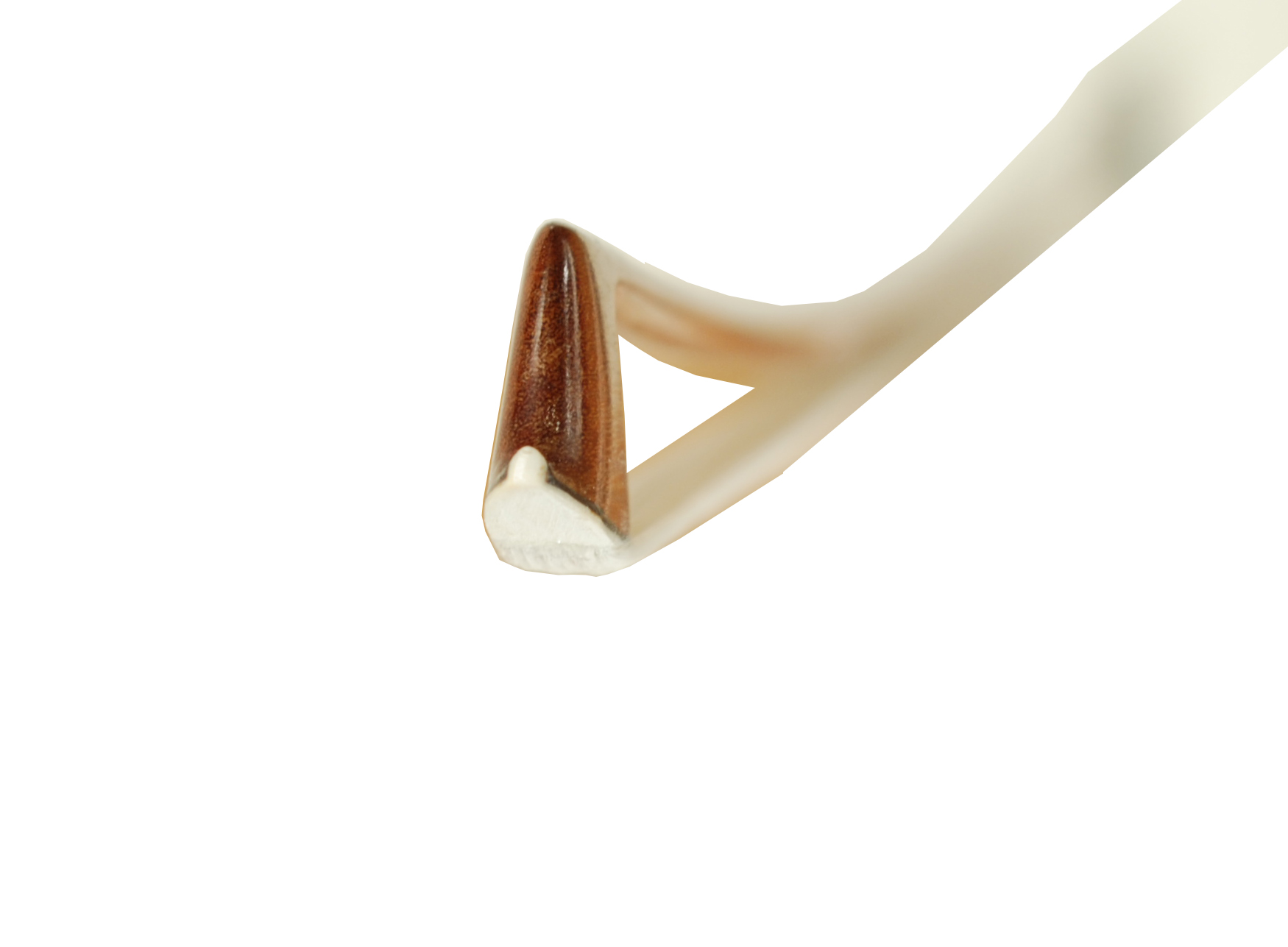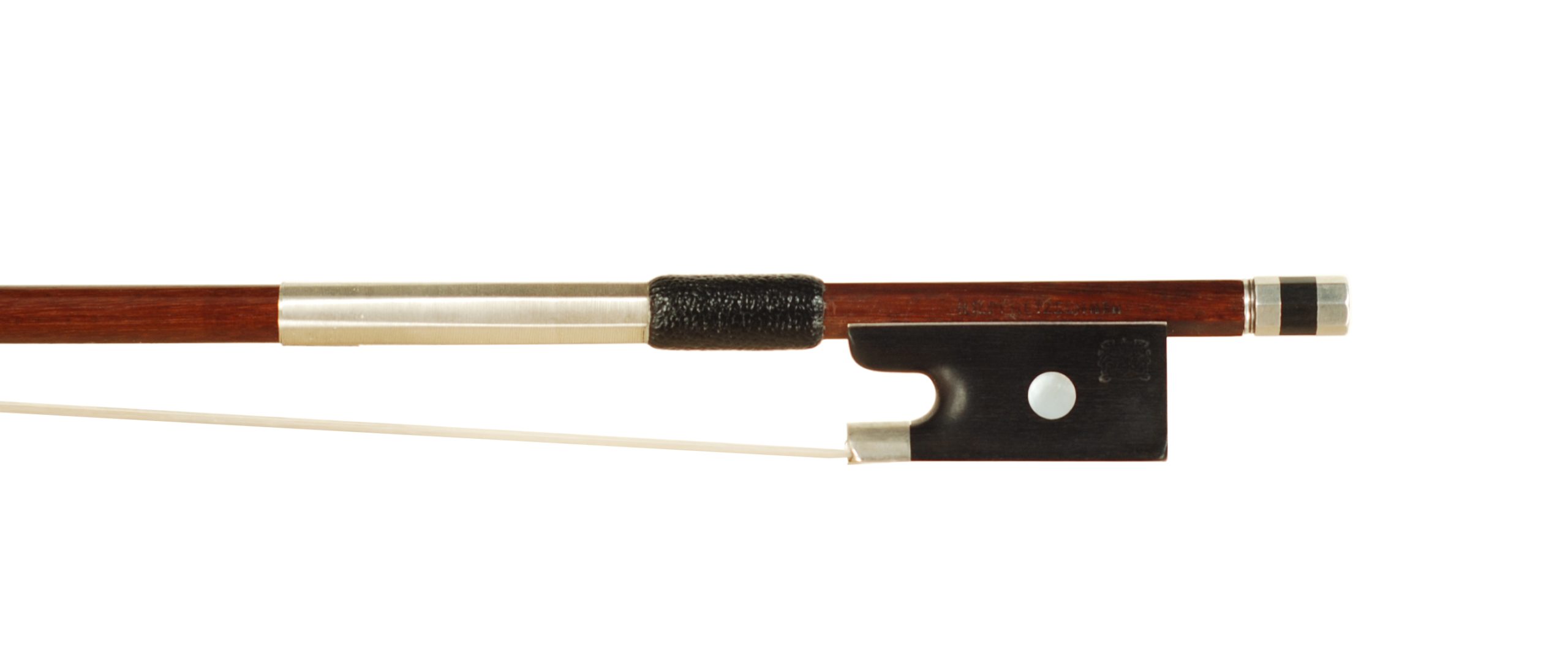Classic Blind Eye Frog Violin Bow- Markneukirchen circa 1910-1920
$935.00
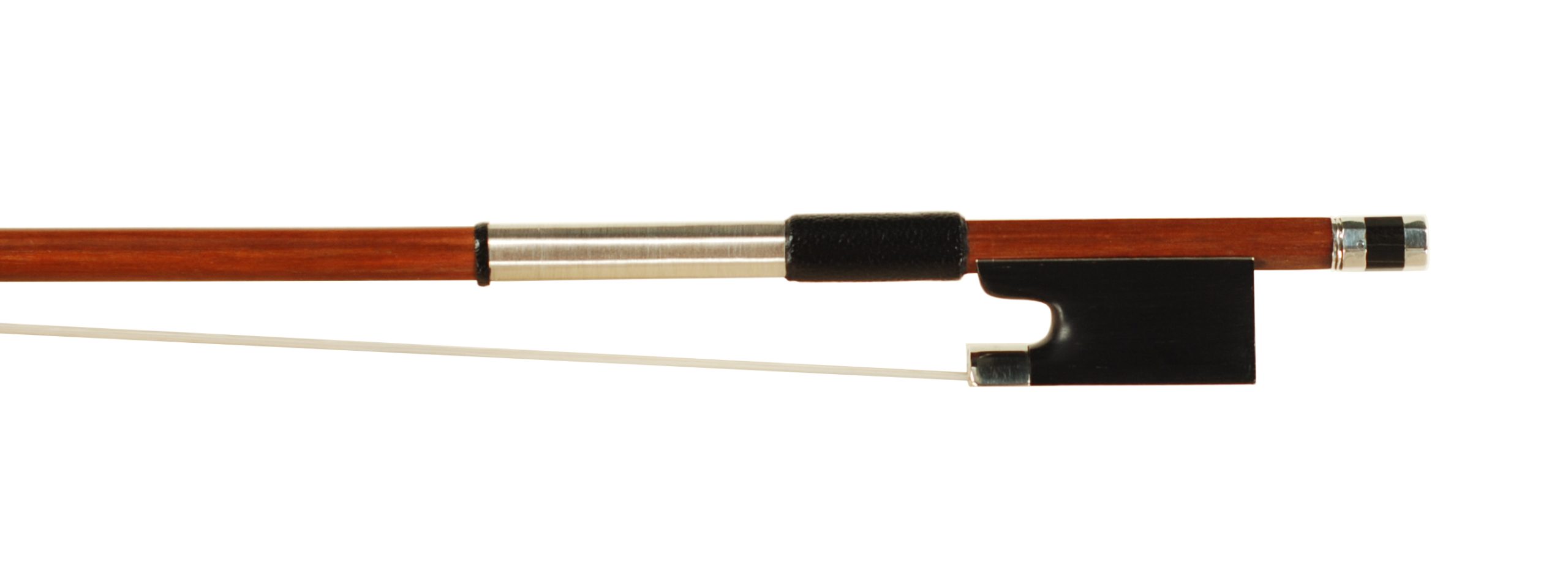
Stamped:
Don’t let being a non-stamped violin bow get you to think less of this stick. This bow jumps out to me. The grain in the wood is flawless, the color alluring, and the texture like a touch of satin. It is sterling silver mounted with an ebony blind eye frog, full-length mother-of-pearl slide, silver heel, and a silver and ebony three-piece end button that is pinned and has two turns in the collar. Everything on this stick speaks of excellent workmanship and at a level that should have been stamped with the maker’s name.
This is a bow made in the Markneukirchen area around or just before World War I. This area of Saxony, especially the town of Markneukirchen, was where many young men that wanted to become bow makers and develop their skills were drawn to. They hoped to get employed by a shop that might pay a worker enough to live on. Apprentices would work long hours, akin to farmers’ hours. At first, they might have to pass a bench test given by the shop owner demonstrating their work with a knife, a chisel, small block planes, and their sharpening skills. When I started as a young apprentice, I cut sandpaper to desired widths and length each worker wanted and the correct grits. I also spent many hours carving perfect square blocks, I mean perfect. I also spent one entire day every two weeks sharpening the basic tools that were owned by the shop, especially at the bow benches. The bow guys were very fussy about how sharp their stuff had to be, the correct angles, and a polished finish on their chisels. The bow chisels were always getting worn because of their use in the ebony, the frog mortise work. Ebony is used in a bow’s frog, fingerboards, nuts, saddles and pegs. Ebony is one of the hardest woods to carve that the Lord makes (John 1:3 NIV). The ebony wood is beautiful, but its density is like a rock. In the 19th and 20th century young apprentices developed their skills for 3-5 years and some never left, getting hired for better wages and better hours. There were many though that didn’t continue; if they did not show potential they were let go after a year. Apprentices signed contracts which stated a work week was six days per week from sunup to sundown. I have seen these signed old contracts sold at auctions in Europe. These shop owners had a practice not to have young makers put their personal name on a bow. Our bow does have “GERMANY” stamped on the bottom flat, butt of the bow near the mortise. This is one of those non-stamped bows. No maker’s name, just origin, but WOW! this is a very nice bow, made in a fine shop. This bow is way above a typical non-stamped bow. It is a sterling silver mounted stick with a semi-firm fight in the bow. In restoring the bow I gave the stick a good cleaning and a new sterling winding and leathers. I added 7.0 mm more than the length of the original silver winding to bring the overall weight up slightly and realign the balance of the bow towards the frog end of the stick.
The classic frog has no mother-of-pearl eyes, the slide is full length, the three-piece endscrew and the frog’s lining have pins to hold the silver in place, another good sign of an older bow. The more I worked on this bow the more I noticed the craftsmanship which is incredibly nice and helps this stick stand out in a crowd. It is a pernambuco specie bow, round in section, and completed with a classic blind eye look.
Weight fully haired 61.2 grams
